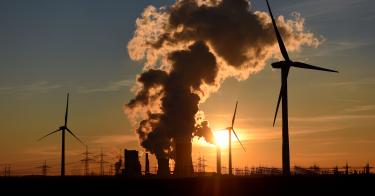The past decade has been one for the books in the energy sector (and for energy customers). While many events could be summoned, two radical developments in two of the world’s largest economies offer some interesting contrasts for reflection.
Development No. 1: an American energy revolution. Before 2008, government and private-sector experts projected that U.S. oil and gas supplies would shrink and prices would escalate. But George Mitchell’s innovations in fracking and drilling technology flipped the equation.
American companies are now setting production records annually, supplying 16% of the world’s oil and 21% of its natural gas—more than any other country. Oil and gas prices plummeted, upending the electricity sector and bucking the Great Recession by driving new investment in energy production and in big energy users like manufacturing.
As production soared, Washington eliminated some legislative and regulatory barriers that kept American energy from reaching new markets. With the U.S. increasingly available as a supplier, countries have more choice and freedom from hostile actors that manipulate energy supply to compel political obedience.
OPEC and Russia cut back their own production as U.S. companies drove down prices for customers. And events that normally would have spun global markets into chaos—political upheaval in Venezuela, or the Iranian attack on Saudi oil fields—hardly caught the attention of Americans filling up at the pump because the flood of new resources from U.S. soil filled the void.
Development No. 2: Germany’s recommitment to “Energiewende” or “energy turn.” Germany made itself out to be a global warming warrior over the past decade, using heavy-handed policies in an attempt at political re-engineering of its energy sector and economy.
The German government taxed its citizens billions to subsidize renewable energy technologies and forced the closure of coal and nuclear plants as part of its plan to reduce carbon dioxide emissions 80% by 2050. After Japan’s nuclear power accident in 2011, Berlin recommitted to the anti-nuclear component of its plan, shutting down eight nuclear power plants immediately, three more since and the last six to go by 2022. A quarter of the country’s electricity gone, just like that.
The Germans preached their approach globally. Theirs was among the loudest voices at the 2016 Paris climate agreement, and in other international venues—like Group of Seven summits and the European Union Parliament—they continuously called on other nations to develop standards and regional emissions mandates, define green finance laws and eschew new coal power plants.
Bold talk and action, but the results have not followed, according to a new working paper for the National Bureau of Economic Research. At counterpurposes with the Energiewende, coal and natural gas made up for lost power from shuttered nuclear power plants to provide 2 to 3 terawatts more fossil-fueled electricity per month.
Electricity prices, local air pollution and carbon dioxide emissions were all significantly higher than they would have been had Germany kept its nuclear power plants online. The study estimates that the benefits of closing plants totaled $200 million per year, in the face of $10 billion to $12 billion in annual costs.
The U.S. and Germany embraced two diametrically opposed philosophies. One is based on free enterprise, which ultimately inspired innovation to the great benefit of many. The other is based on government-directed decision-making, and it is failing to meet its own objectives at great cost.
It’s the difference between flexibility and rigidity, creativity and control, choice and compliance.
Americans this year will hold an election in which both philosophies are on the table. Many presidential candidates are proposing a bold rejection of economic freedom to embrace Germany’s command-and-control model. But a look back at this past decade seems to show in yet another way that central planning, no matter how detailed, is no match for the dynamism of human creativity, the complexity of global markets and inevitable unforeseen change.
This piece originally appeared in The Washington Times



